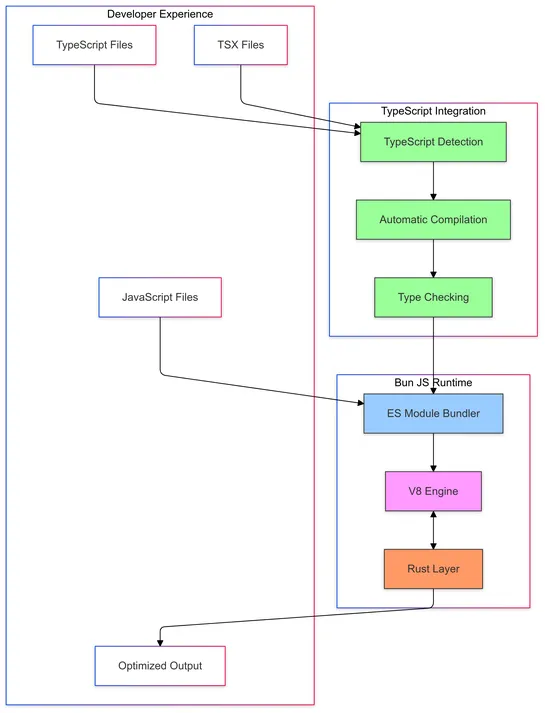How to Use the Laravel Scheduler for Task Management
Learn how to automate and manage your tasks efficiently with the Laravel Scheduler, making repetitive processes easier to handle in your app.
Join us
Learn how to automate and manage your tasks efficiently with the Laravel Scheduler, making repetitive processes easier to handle in your app.

Hey, sign up or sign in to add a reaction to my post.
Learn how to quickly get started with Bun.js, a fast and efficient JavaScript runtime, and optimize your development workflow.

Hey, sign up or sign in to add a reaction to my post.
Learn how to configure Serilog, handle errors, and explore best practices for effective logging in your .NET applications.

Hey, sign up or sign in to add a reaction to my post.
SLF4J offers flexibility with multiple logging frameworks, while Log4j provides rich features for detailed, high-performance logging.

Hey, sign up or sign in to add a reaction to my post.
This comprehensive guide compares two leading monitoring platforms: Datadog vs New Relic. The analysis covers essential aspects of both tools, helping teams make an informed decision based on their specific needs.
Key Highlights:
Monitoring Capabilities: Datadog offers strong infrastructure monitoring with real-time metrics tracking, while New Relic excels in application performance monitoring and code-level insights.
Integration Support: Both platforms provide extensive third-party integrations (Datadog: 600+, New Relic: 650+), covering major cloud providers, databases, and development tools.
User Experience: Both tools feature modern, intuitive interfaces with customizable dashboards and visualization options, catering to different user preferences.
Target Users: Datadog is ideal for DevOps and SRE teams focusing on infrastructure, while New Relic better serves development-focused teams needing deep application insights.
Pricing Models: Datadog uses host-based pricing with feature add-ons, while New Relic employs a data ingestion-based model with tiered pricing plans.
The comparison reveals that while both platforms offer robust monitoring solutions, their strengths lie in different areas. Datadog shines in infrastructure monitoring and operational insights, making it suitable for operations-focused teams. New Relic's strength in application performance monitoring and developer tooling makes it an excellent choice for development-centric organizations.
Hey, sign up or sign in to add a reaction to my post.
Maintaining database consistency can quickly spiral into chaos, presenting considerable challenges. To overcome these, it’s crucial to employ effective strategies for managing data modifications and adjustments.

Hey, sign up or sign in to add a reaction to my post.
This comprehensive guide explores how to effectively implement and use an error budget calculator to improve service reliability engineering practices. The article breaks down complex SRE concepts into practical, actionable steps while sharing real-world implementation examples.
The post begins by introducing the fundamental concepts of error budgets and their calculation methods, moving beyond the basic formula of "Error Budget = 100% - Service SLO" to explore more nuanced approaches. It emphasizes the importance of considering both projected downtime and maintenance when establishing initial error budgets.
A significant portion of the content focuses on practical implementation, featuring a detailed case study of Acme Interfaces. This real-world example demonstrates how a company reduced their error rate from 15% to under 10% through systematic analysis and improvement of their systems.
Key topics covered include:
Detailed explanation of error budget calculation methodologies
Different types of downtime and their impact on error budgets
Step-by-step implementation guide
Best practices for error budget management
Practical action plans for teams
Hey, sign up or sign in to add a reaction to my post.
Learn how Node.js worker threads can boost performance by offloading tasks to background threads—simple, efficient, and headache-free!

Hey, sign up or sign in to add a reaction to my post.
Having your to-do list available every time a new issue in Jira is created is quite a boon in terms of saving time and keeping everyone on the same page. And while Jira does not have checklist functionality by default, you can use a 3rd party plugin to automate your Jira ticket workflow.
Hey, sign up or sign in to add a reaction to my post.
Hey there! 👋
I created FAUN.dev(), an effortless, straightforward way to stay updated with what's happening in the tech world.
We sift through mountains of blogs, tutorials, news, videos, and tools to bring you only the cream of the crop — so you can kick back and enjoy the best!
